Simple Tallow Deodorant Recipe
It can be tricky to find the right natural deodorant that really works. After making our own homemade deodorant for years, we have recently moved to making this tallow deodorant and have found a new favorite!
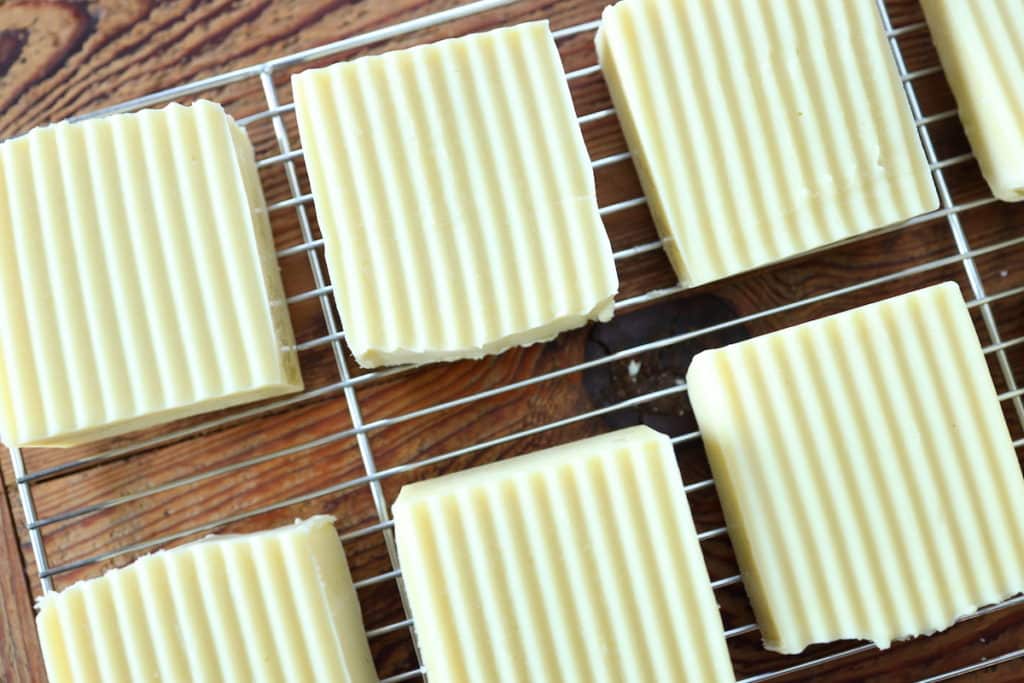
When it comes to skincare, we love tallow! Slowly we have been transitioning our home skincare products to being tallow based and this tallow deodorant is our latest addition.
We keep our skin care routine super basic but tallow magnesium lotion, tallow shampoo bars, sunscreen, and tallow balm are constantly being used in our house.
Will Tallow Deodorant Work for You?
If you are switching directly from using a conventional, store-bought deodorant, making the change to this tallow deodorant or any natural deodorant may leave an unpleasantly stinky result.
This is because the ingredients that are used in most standard deodorants contain a long list of chemicals and additives that unnaturally block the body’s ability to sweat. Ingredients that have been known to cause a wide range of health problems from cancer and dementia to hormone and endocrine disruptions.
This list includes:
- Aluminum
- Phthalates
- Propylene glycol (aka antifreeze)
- Parabens
- Formaldehyde
How to Detox Your Pits
If that describes you, no need to be concerned. There are very gentle ways to detox your pits that can make that transition from conventional to natural deodorants like this tallow deodorant go much more smoothly.
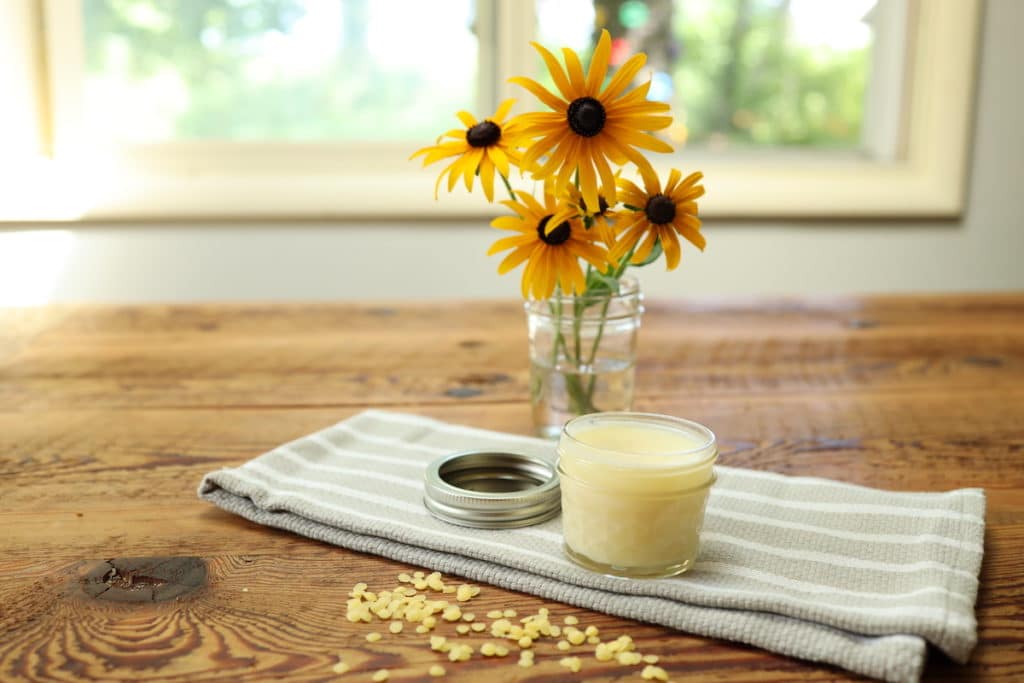
This is important because your body needs to clear out these ingredients that are likely clogging those pores in your armpits. By pulling these chemicals out of the armpit tissue, it allows the body to adjust much more easily to the new natural deodorant ingredients.
To detox your pits, simply mix about 1 tbsp of bentonite clay with 1 tsp of apple cider vinegar and 1 or 2 tsp of water. Rub this mixture on your armpits and let sit for 15-20 minutes before washing off. Repeat this daily until you notice the underarm odor has greatly reduced or gone away and you are adjusting well to natural deodorant.
Why Tallow for Deodorant and Skincare?
There are so many benefits to using tallow on the skin. We began by switching our lotion to tallow balm and were so pleased with how it felt and what it did for our skin that we haven’t looked back. Tallow has been used both internally and externally for hundreds of years and with good reason – its benefits are hard to beat!
- High in vitamins A, D, E, K, and B12
- Rich in minerals
- Contains conjugated linoleic acid (CLA) with natural anti-inflammatory properties
- Palmitoleic acid is a powerful antimicrobial agent that is also a basic building block of our skin
- Palmitic acid helps to improve the function of the skin’s protective barrier
- Stearic acid helps to repair damaged skin and improves the skin’s flexibility and suppleness
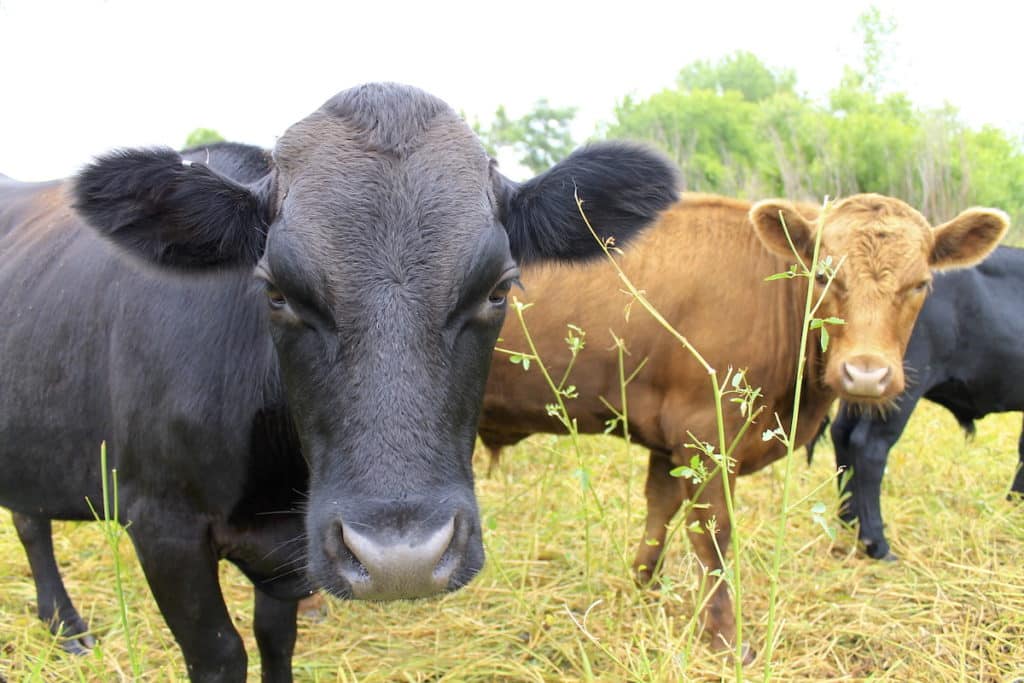
Other Effective Ingredients in Tallow Deodorant
Another reason we love this deodorant is how simple it is to make. It uses only a few basic ingredients that we always have on hand.
Arrowroot Starch – Arrowroot starch is very absorptive in nature and work really well to pull out odors. Cornstarch is often used instead but it is challenging to find non-GMO cornstarch and can cause more sensitivities in people.
Baking Soda – Baking soda is the classic deodorizer and it is no different in this tallow deodorant. It works to remove smells while also having that drying effect.
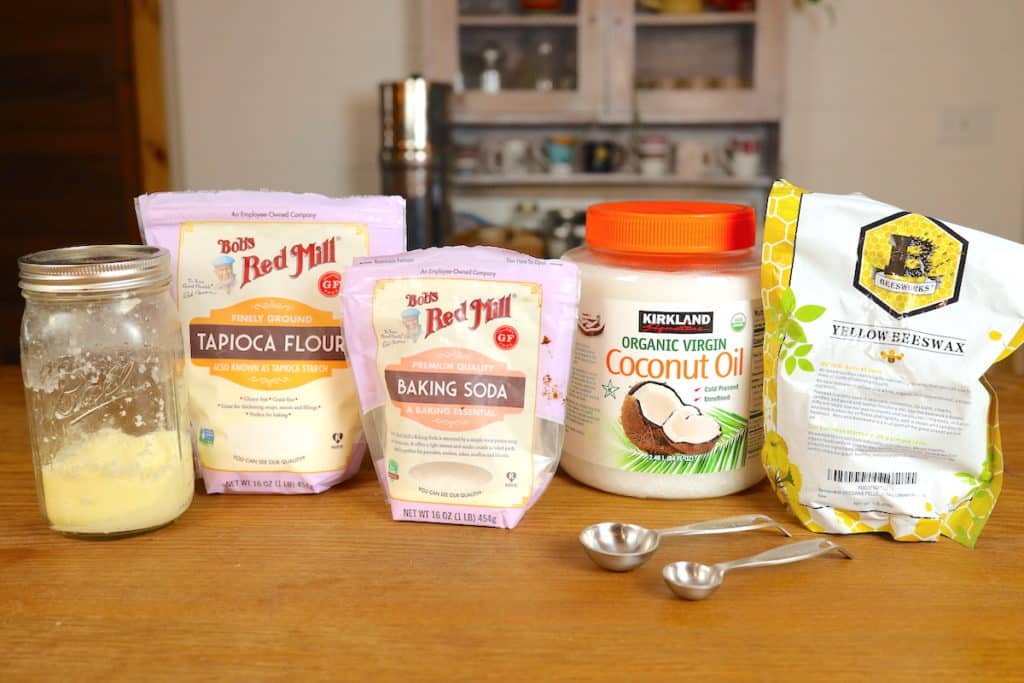
Coconut Oil – Coconut oil is naturally antibacterial and antifungal while also being soothing to the skin.
Beeswax – Beeswax is used to help give the deodorant a firmer texture and hold everything together so the oils don’t separate.
Essential Oils (Optional) – We generally make our tallow deodorant unscented. But essential oils are a great option to naturally provide some fragrance without being nearly as harsh and toxic and synthetic fragrances. Geranium, tea tree, and lavender are some of my favorite more gentle and beneficial essential oil options.
How to apply?
While deodorant sticks have become the norm in our culture, we have found that we prefer to just keep our deodorant in a small jar and apply it with our fingers. This option, for us, tends to be less messy with no crumbling or malfunctioning deodorant sticks and gives us better control over how much deodorant we are using.
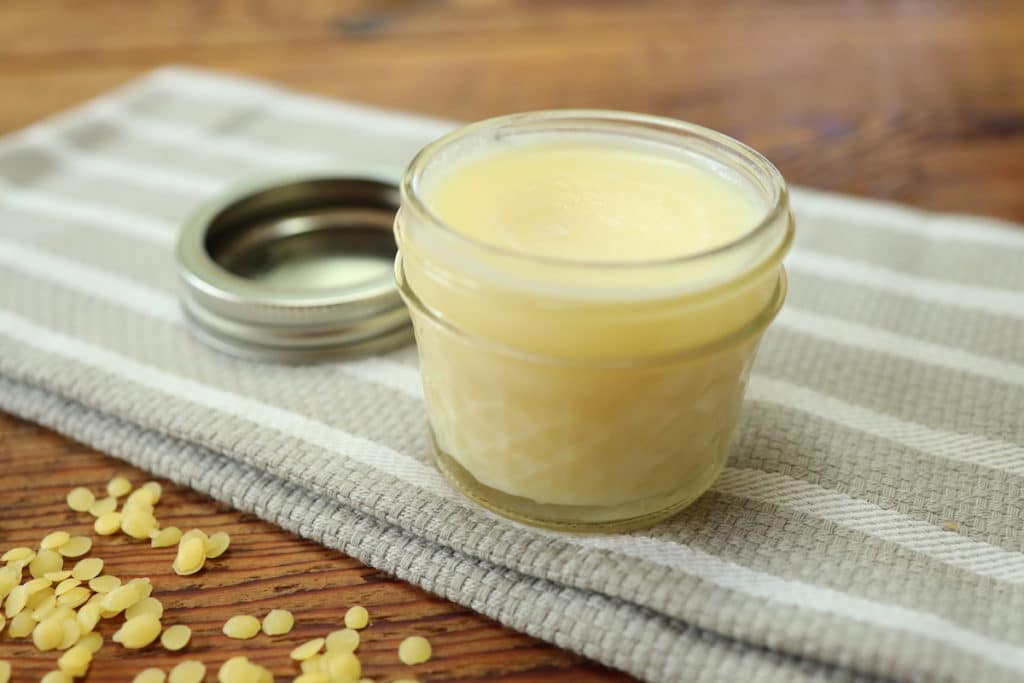
However, if deodorant sticks are your preference, you could totally buy applicators like this and pour your homemade deodorant into the stick container instead of a jar. If you are going this route, I would recommend increasing the amount of beeswax you use to 2 tbsp to give the deodorant a firmer texture more suitable to the stick.
Tallow Deodorant Recipe
Yield: ½ cup
One of the intimidating things about making your own skincare items is the belief that it is going to be hard. But this often couldn’t be further from the truth. Typically, most skincare items, this tallow deodorant included, are simply made by measuring out a handful of ingredients, melting them together, and pouring them into your container of choice. Easy Peasy!
Ingredients:
– 2 tbsp Tallow*
– 1 tsp Baking Soda
– 2 tbsp Arrowroot starch
– 1 tbsp of Beeswax**
– 2 tbsp Coconut Oil
– 10-15 drops of Essential Oils (Optional)
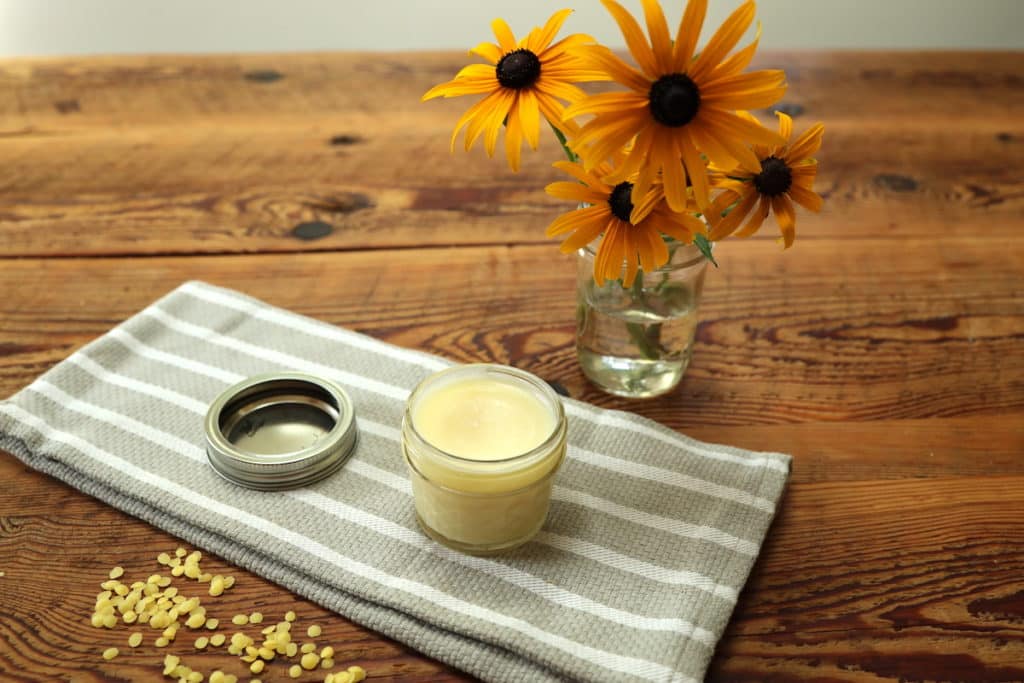
Directions:
- Measure out all ingredients and place them in a heat-safe glass container. I like to use a 1-cup Pyrex measuring cup for this.
- Place the container inside a small saucepan of water, like a double boiler.
- Place over low-medium heat, stirring the mixture occasionally until everything is completely melted (10-15 minutes).
- Pour contents into a 4 oz glass jar or container of choice***.
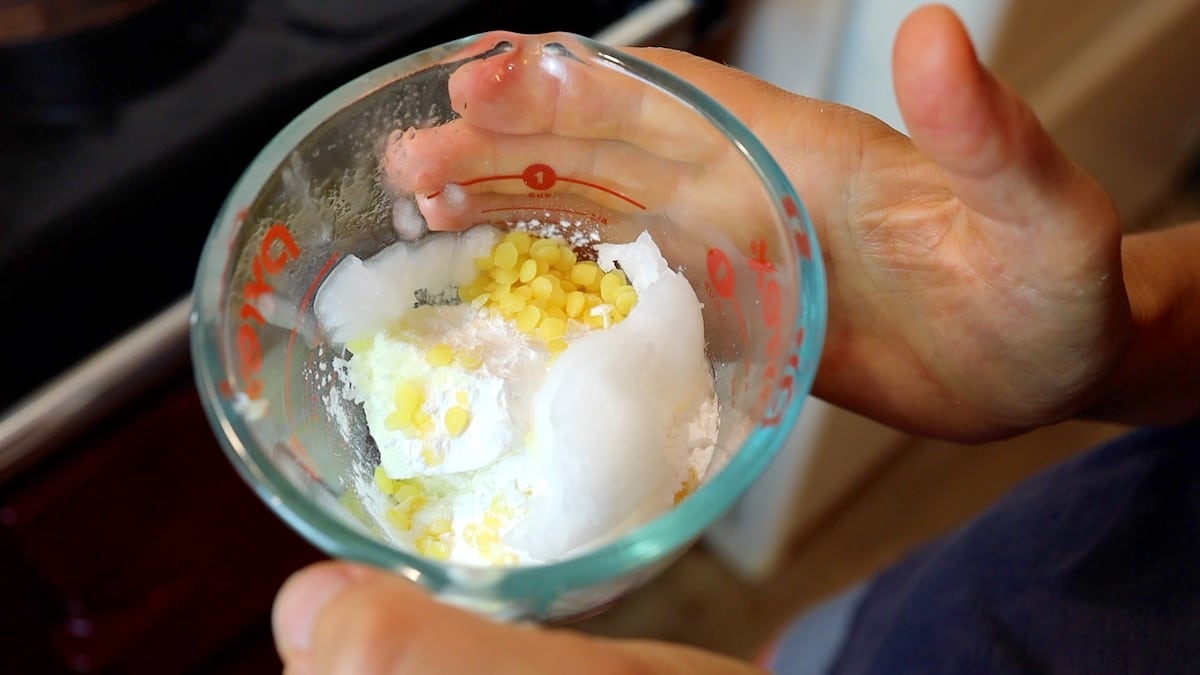
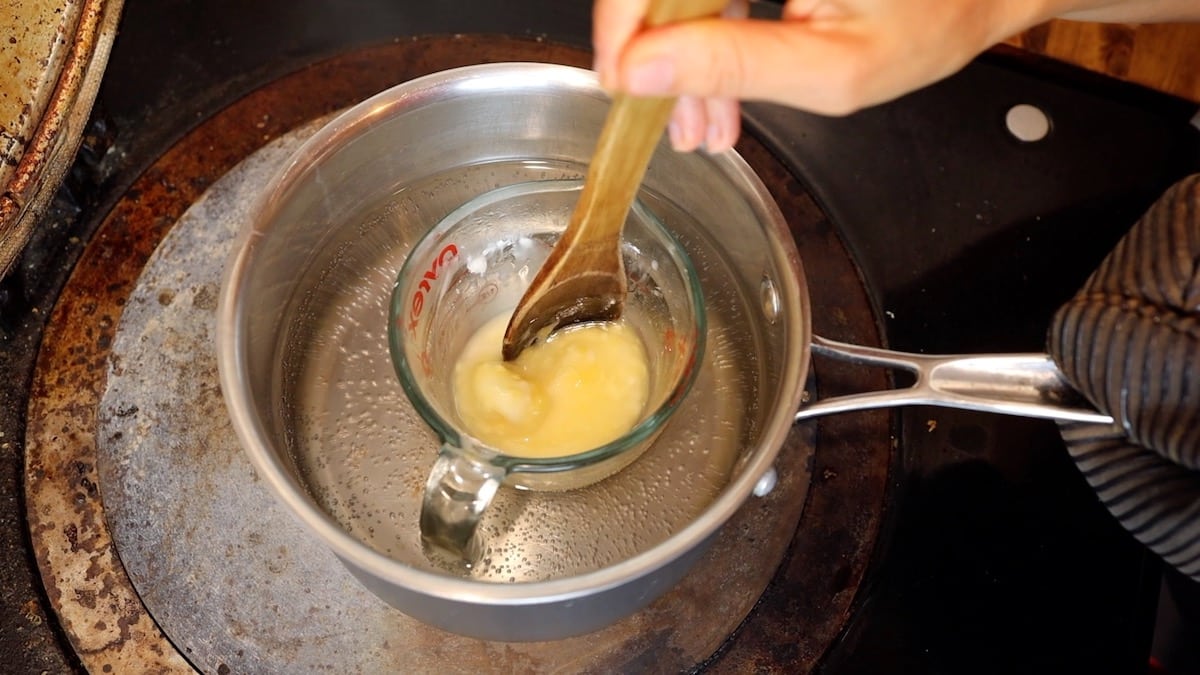
*When rendering tallow for skin care uses, it’s important to use the wet method of rendering to avoid the beefy smell. This is the tutorial we follow to render tallow to use in all of your skin care items.
**If you are making a stick deodorant or want a firmer texture, increase the beeswax to 2 tbsp.
***If you find that the oils separate to the top, just stir together either before the deodorant sets up or after.
Some of the above links are affiliate links. This means we earn a small commission on qualifying purchases at no cost to you. We are so appreciative of your support!
Looking to add more tallow-based skincare items? Check out more on the blog:
Tallow Magnesium Lotion
Tallow Sunscreen
Tallow Balm
Tallow Shampoo Bar
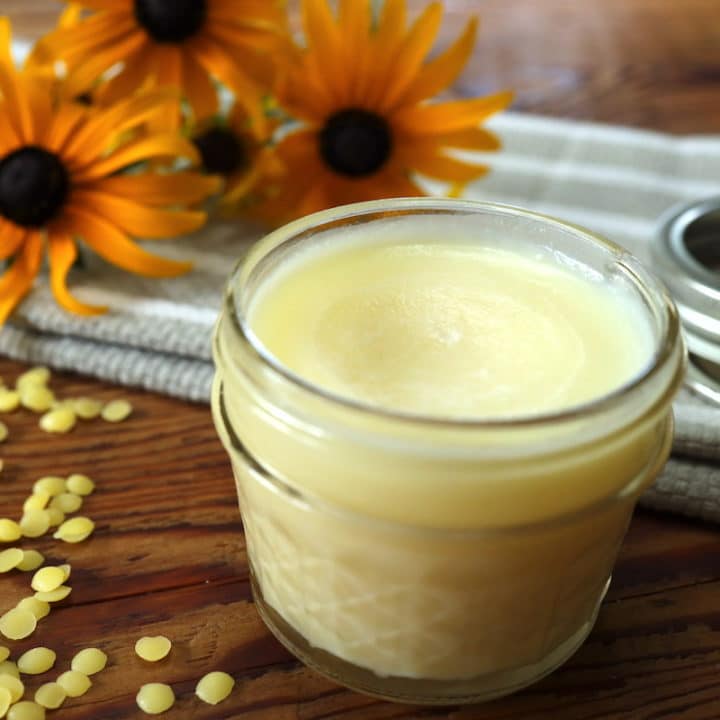
Simple Tallow Deodorant Recipe That Actually Works
It can be tricky to find the right natural deodorant that really works. After making our own homemade deodorant for years, we have recently moved to making this tallow deodorant and have found a new favorite!
Ingredients
- 2 Tbsp Tallow*
- 1 Tsp Baking Soda
- 2 Tbsp Arrowroot starch
- 1 Tbsp of Beeswax**
- 2 Tbsp Coconut Oil
- 10-15 drops of Essential Oils (Optional)
Instructions
- Measure out all ingredients and place in a heat safe glass container. I like to use a 1-cup Pyrex measuring cup for this.
- Place container inside and small saucepan of water, like a double boiler.
- Place over low-medium heat, stirring mixture occasionally until everything is completely melted (10-15 minutes).
- Pour contents into a 4 oz glass jar or container of choice.
Notes
*When rendering tallow for skin care uses, it’s important to use the wet method of rendering to avoid the beefy smell. This is the tutorial we follow to render tallow to use in all of your skin care items.
**If you are making a stick deodorant or want a firmer texture, increase the beeswax to 2 tbsp.
Pin it for later!


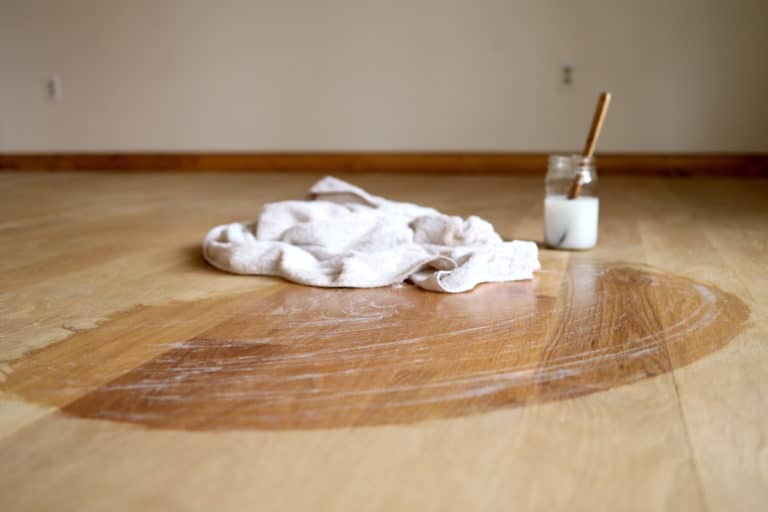
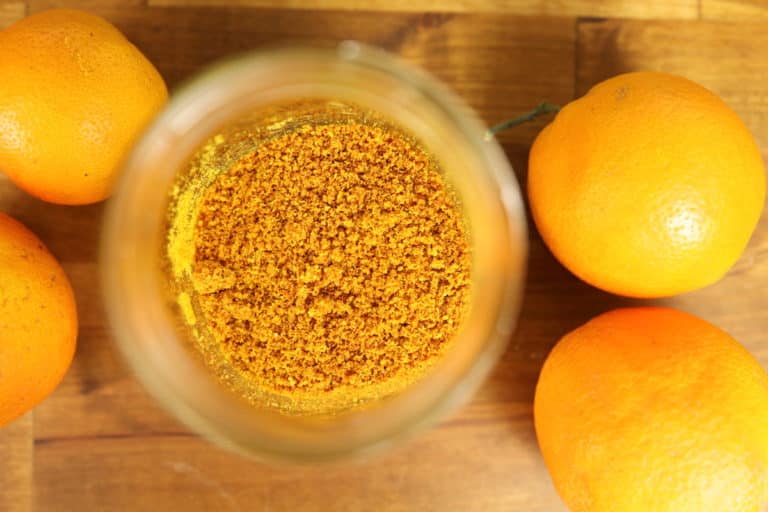

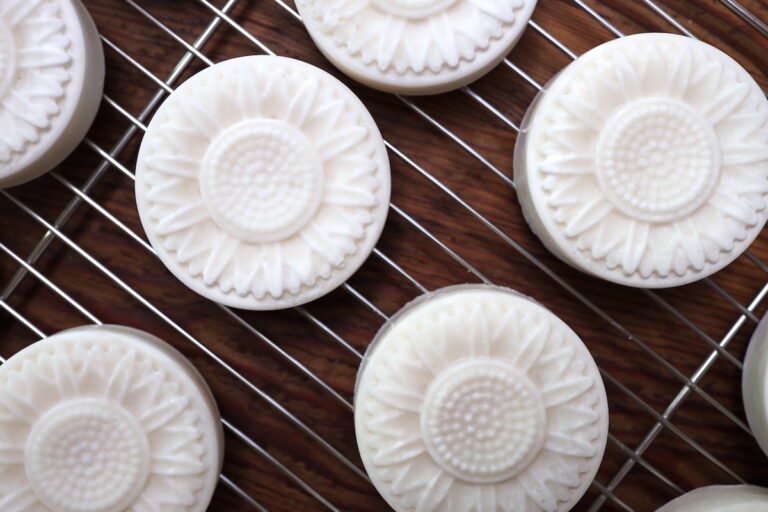


Hi! I make and sell tallow balm and just use the dry method. No one complains about the natural scent and other types are made with essential oils. Does the water method shorten shelf life? I’ve seen only a few weeks vs 6 months to a year. I’m wanting to venture into other products and try the wet method.
Hi! I’ve used my rendered tallow with the wet method for months or even over a year later for skin care products. The big thing is making sure you get all of the water and moisture out before putting in your jars or else it can mold. As long as there is no water, it can last for a long time! All the best!
I found the best deodorant to be a 50/50 mix of arrowroot powder and white kaolin clay. Just sprinkle some in your hand and smear under the arms. I also use it as a Toothpaste and foot powder.
Hi, I’ve made a few products using tallow and want to try the deodorant. I have a few questions before I venture out. Does the tallow not stain clothes when used as a deodorant?
Beeswax is almost unobtainable where I live and very expensive if it can be found. If I used less coconut oil would it be possible to make a dry deodorant?
Hi there! I’m so sorry for the delay in my response. I’ve not had issues with it staining clothes more than anything else with oil in it. Are there any other wax options that you can use? We’ve replaced beeswax with candelilla wax before and that works well but that’s more expensive and harder to come by where we are. I’ve also heard of soy wax or olive wax but have never tried them. You could also just trying playing around with the tallow, baking soda and arrowroot powders if adding the wax wasn’t an option. I’ve done a deodorant with coconut oil, baking soda, and arrowroot that’s worked pretty well. I hope that helps some, it may just take some playing around with to figure out what works best for you with the ingredients you have! All the best!
Hi! I have made several natural deodorants, but never with tallow so I definitely want to try this!!
Where do you recommend getting the tallow from?
Thanks!
Wonderful! We’ve always gotten it from a local butcher or farmer.
Hi, are there any variations to this recipe for anyone sensitive to baking soda and/or coconut oil and want to exclude it? Thanks!
Good question! I haven’t experimented with eliminating baking soda or coconut oil on this recipe. Most recipes that I see without baking soda use either clay/zinc oxide or a shea butter or cocoa butter with arrowroot flour. Let me know if you experiment with it and what you discover!
hi
just wondering – does it have to be tallow – can it work with clean rendered lard??
thanks
Hi! I haven’t tried this personally but I don’t see why it wouldn’t!
hey! Have you ever used non nano zinc oxide in a variation of this? I’ve read it can help neutralize smells I just don’t know how much to add to this recipe/what to replace in this recipe if adding it. Any tips would be appreciated 🙂
I haven’t but it’s worth experimenting with! We use non nano zinc oxide in our sunscreen but I’d be curious to hear your results for using it in deodorant!
Hey, getting ready to order supplies to make this recipe and the supplies to make your magnesium tallow lotion recipe. I noticed in the lotion recipe, you said you replaced the beeswax with candelilla because beeswax tends to not last as long in the emulsifying action. Should I do the same for this deodorant recipe?
Hi! Either beeswax or candelilla wax will work for the deodorant recipe! I prefer using arrowroot over the tapioca starch in this too.
I’m making this deodorant for the second time- it works so well! Thanks for a great recipe!
Awesome!! So glad you are liking it! Thanks for sharing!
Hi there could you give me an approx of shelf life of these products …. what an awesome page you have I am new to this just starting out
Mant blessings 2u Jenni from Australia
Hi Jenni! I’ve never had any issues with them molding but I’d try to use them within a few months. So glad you found us!
Okay I tried this! BUT did I do something wrong? My hair is super duper clean which is good, but after the first wash it starts to feels dry and rough. :(. Help. I loved them for body and even dishes but how can I make it work for my hair. Love to hear your feedback. Thank you in advance!
Hi! You could try adding an apple cider vinegar rinse after you use the shampoo. Just add a tablespoon or 2 of ACV in a bottle with a few cups of water, I like to do this in a squirt bottle. This pour a little over your head and rinse. This can help balance pH. I do think this shampoo bar is bioindividual and seems to works great with some and their hair type and not as well with others. Hope this helps!
Sorry I must have moved places and didn’t even realize it. My comment is for the tallow shampoo bars!